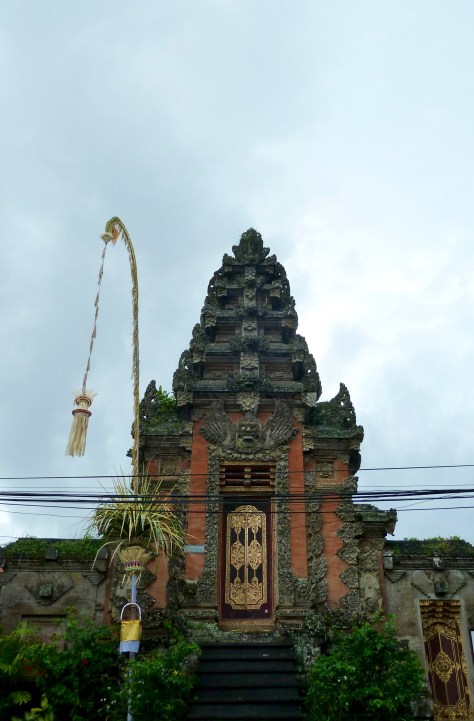To recover from our grade 10 trip to Cambodia and to celebrate Chinese New Year, I headed to the city of Ubud on the Indonesian island of Bali. The stereotypical Bali experience is one of beaches and parties, but Ubud is actually located inland without a beach. This helpful map comes from Lonely Planet:

I honestly didn’t do much while I was in Ubud and it was fantastic. My very wonderful Airbnb hosts directed me to the Yoga Barn where I bought a three-class pass and thoroughly enjoyed myself. Not only was the studio beautiful, but they also had a delicious juice bar! I took the photos below standing on the deck of Yoga Barn’s complex:


When I wasn’t in the studio, I walked around town, visited a few must-see sights (the market and palace), ate top notch vegetarian food (Ubud is perfect for those on a health kick with all the yoga and organic restaurants), drank local wine, and wandered in and out of shops.



Most families live in compounds, each of which contains the family temple. Balinese Hinduism is quite different from the more familiar Indian Hinduism, and I was glad to learn about it from my hosts. All around Bali people were erecting bamboo poles like the one below to prepare for the Galungan celebration, marking the return of gods and ancestors. I saw multiple families sitting outside and around their homes stapling together the bamboo flower decorations that wrap these poles, as well as putting together other offerings like the ones seen above.

As I wandered, I took pictures. While many of the photos below are the exteriors of temples, others are family compounds. Many of these, like the one where I stayed, are used in part for guest houses. The hospitality and tourism sector is the primary industry in Bali right now, thanks in part to the artists who came to Bali in the 1980s in search of an “untouched” place for inspiration. Rice farming, which still happens in Bali though not in trendy Ubud, was basically the only industry before the tourists arrived.
The architecture was probably the most interesting aspect of Ubud for me. I loved the stonework and the solidity and stateliness it gave to the city. Ubud felt solid, strong, and anchored in tradition. The more I talked to my hosts, the more I learned how family and religion are the center of Balinese life. In a very old world way, most people know each other, are related in some manner, and have been in their homes for generations. As a result, people are happy and comfortable and crime is relatively low. Add that to the yoga and it is no wonder being in Ubud left me feeling calm and centered.
Ubud Market, on the other hand, is the opposite of calm and centered. It is as cluttered and chaotic as any market I’ve seen, which made it a wonderful spot to take pictures:
Yes, it started to pour shortly after I took these photos. I ran into a nearby cafe for cover.
And that was my time in Ubud. Yoga, food, shopping (I actually made purchases for once!), and wandering. I took it very easy this trip (for once) and thoroughly enjoyed myself. How can you not in a place that has flower patterned sidewalks?






























2 thoughts on “Travel Guide: Ubud, Bali”